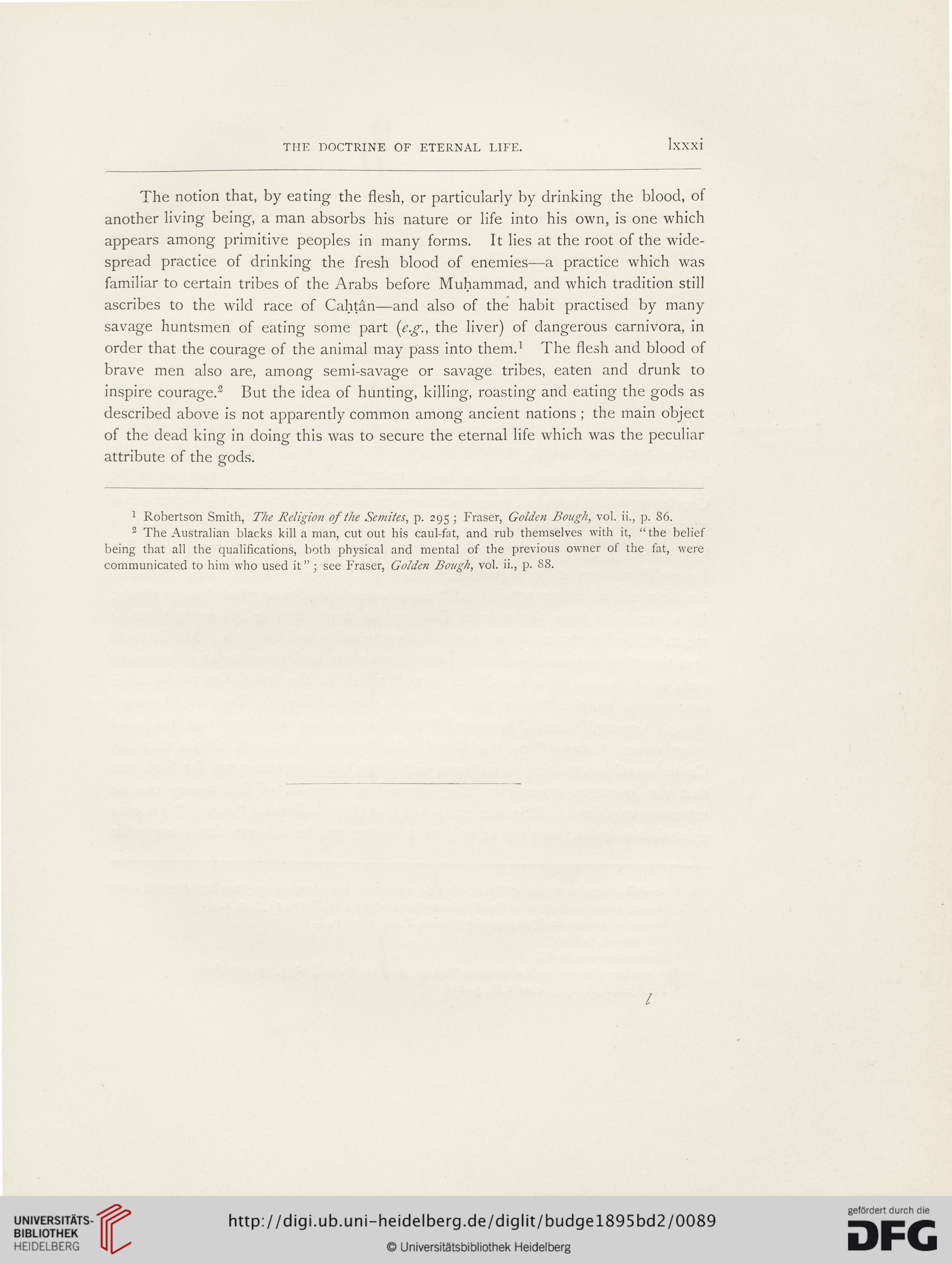THE DOCTRINE OF ETERNAL LIFE.
Ixxxi
The notion that, by eating the flesh, or particularly by drinking the blood, of
another living being, a man absorbs his nature or life into his own, is one which
appears among primitive peoples in many forms. It lies at the root of the wide-
spread practice of drinking the fresh blood of enemies—a practice which was
familiar to certain tribes of the Arabs before Muhammad, and which tradition still
ascribes to the wild race of Cahtan—and also of the habit practised by many
savage huntsmen of eating some part (e.g., the liver) of dangerous carnivora, in
order that the courage of the animal may pass into them.1 The flesh and blood of
brave men also are, among semi-savage or savage tribes, eaten and drunk to
inspire courage.2 But the idea of hunting, killing, roasting and eating the gods as
described above is not apparently common among ancient nations ; the main object
of the dead king in doing this was to secure the eternal life which was the peculiar
attribute of the gods.
1 Robertson Smith, The Religion of the Semites, p. 295 ; Fraser, Golden Bough, vol. ii., p. 86.
2 The Australian blacks kill a man, cut out bis caul-fat, and rub themselves with it, “ the belief
being that all the qualifications, both physical and mental of the previous owner of the fat, were
communicated to him who used it” ; see Fraser, Golden Bough, vol. ii., p. 88.
/
Ixxxi
The notion that, by eating the flesh, or particularly by drinking the blood, of
another living being, a man absorbs his nature or life into his own, is one which
appears among primitive peoples in many forms. It lies at the root of the wide-
spread practice of drinking the fresh blood of enemies—a practice which was
familiar to certain tribes of the Arabs before Muhammad, and which tradition still
ascribes to the wild race of Cahtan—and also of the habit practised by many
savage huntsmen of eating some part (e.g., the liver) of dangerous carnivora, in
order that the courage of the animal may pass into them.1 The flesh and blood of
brave men also are, among semi-savage or savage tribes, eaten and drunk to
inspire courage.2 But the idea of hunting, killing, roasting and eating the gods as
described above is not apparently common among ancient nations ; the main object
of the dead king in doing this was to secure the eternal life which was the peculiar
attribute of the gods.
1 Robertson Smith, The Religion of the Semites, p. 295 ; Fraser, Golden Bough, vol. ii., p. 86.
2 The Australian blacks kill a man, cut out bis caul-fat, and rub themselves with it, “ the belief
being that all the qualifications, both physical and mental of the previous owner of the fat, were
communicated to him who used it” ; see Fraser, Golden Bough, vol. ii., p. 88.
/




